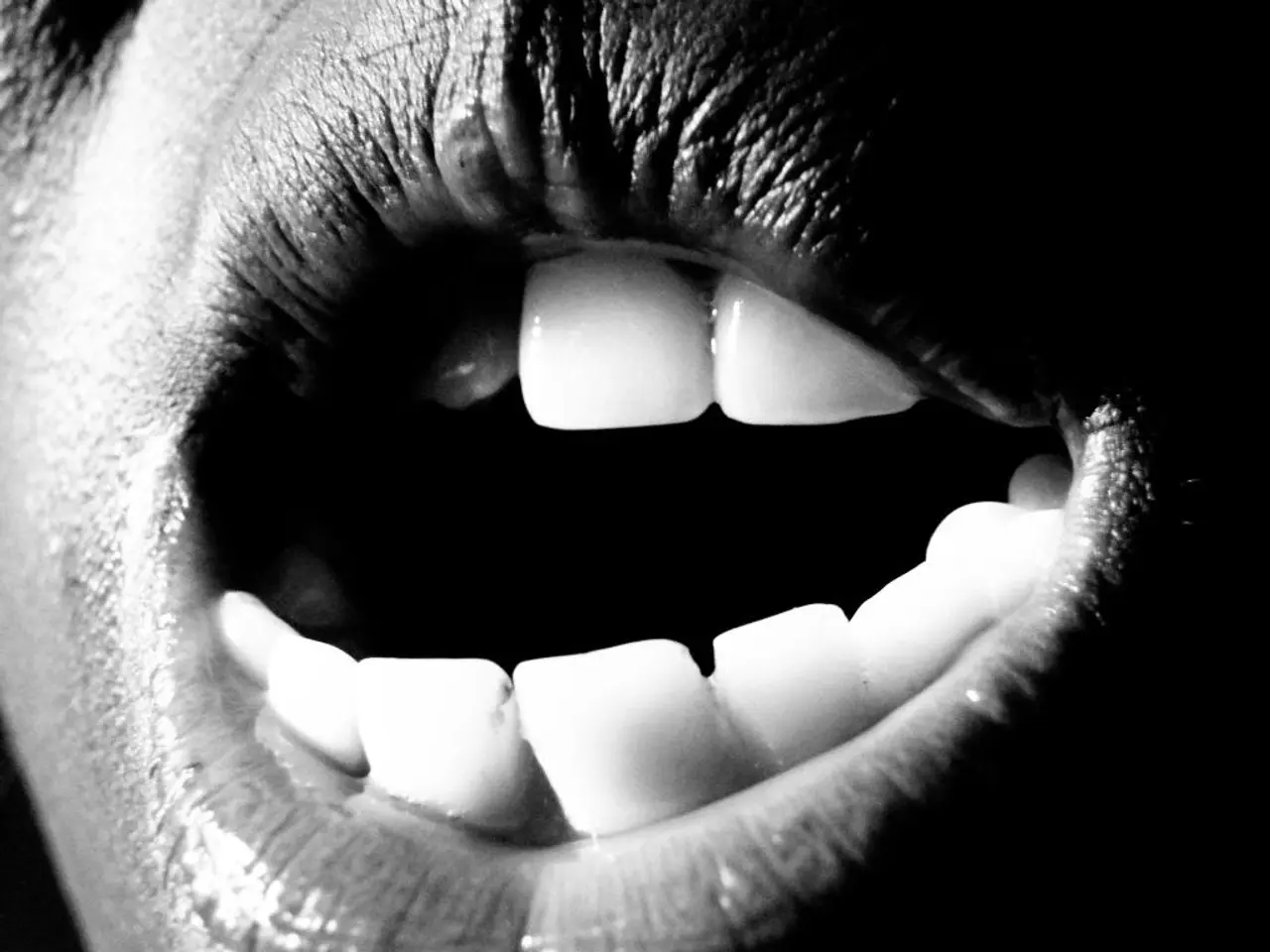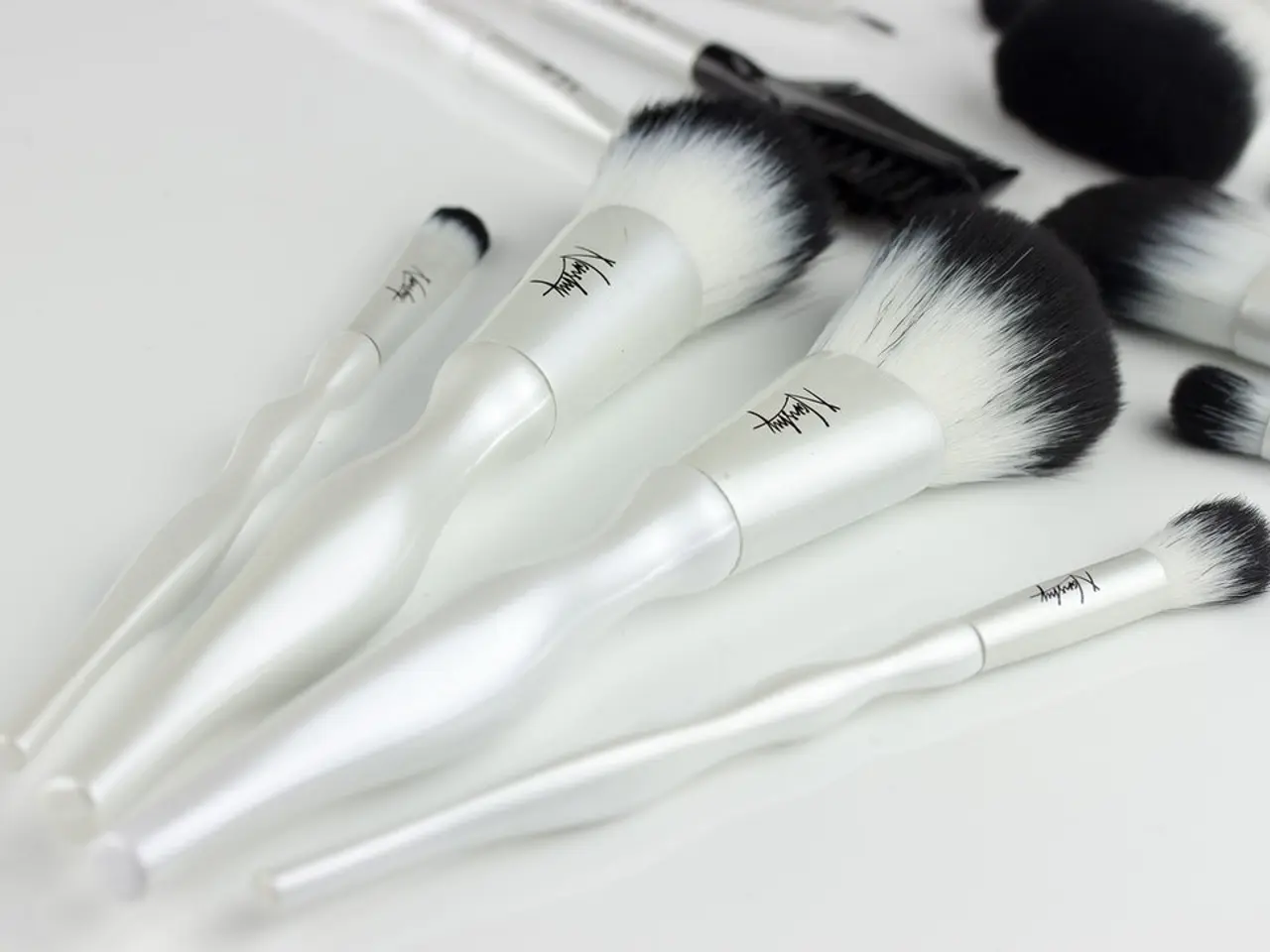Uncovering the Realities of Tooth Whitening: Separating Myths from Reality and Exploring Potential Hazards
Whitening Teeth: A Guide to Effective and Safe Methods
Teeth stains can be a common issue for many individuals, and understanding the causes and the most effective methods to whiten them is essential. This article provides an overview of the different types of stains, the recommended whitening methods, and their effectiveness and safety.
Surface (extrinsic) stains caused by coffee, tea, smoking, or foods can often be effectively treated with at-home whitening products such as whitening strips, gels, or toothpastes containing mild peroxides. These products work by breaking down surface stains through mild oxidation and can lighten teeth by a few shades over days or weeks. For example, the Oralgen NuPearl system whitened teeth by about 2.1 shades in one week without causing sensitivity or gum irritation[1][3].
On the other hand, deeper (intrinsic) stains within the tooth enamel or dentin—due to aging, trauma, or certain medications—typically require professional in-office whitening treatments. These use higher concentrations of hydrogen peroxide and sometimes light activation to penetrate deeply and rapidly oxidize stains. This method is safe when performed by dentists and can yield fast, dramatic results in a single session[2][3][4].
For stubborn discolorations that do not respond sufficiently to bleaching (such as tetracycline stains or severe aging discoloration), cosmetic dental restorations like dental bonding or porcelain veneers may be recommended. Bonding applies tooth-colored resin to mask stains, while veneers are thin ceramic shells bonded to teeth. Both options physically cover discoloration rather than bleach it. Bonding lasts several years and veneers 5–15 years but are more invasive and costly[4].
Natural or mild home methods (like whitening toothpaste) are safe but usually only effective for minor surface stains and cannot alter deeper intrinsic stains[3].
In conclusion, professional whitening treatments are most effective and safe for deep or stubborn stains, while at-home peroxide-based products are suitable for surface stains and mild discoloration. For severe or resistant staining, restorative options may be necessary. Consulting with a dentist can help determine the stain type and the safest, most effective approach for each individual.
Maintaining good oral hygiene is crucial in preventing teeth discoloration. Regular practice of oral hygiene includes brushing twice a day, flossing regularly, and scheduling routine dental examinations. Avoiding tobacco use and limiting the consumption of staining foods and beverages can also help maintain a bright smile.
Summary Table:
| Stain Type | Recommended Whitening Method | Effectiveness | Safety & Notes | |--------------------|-------------------------------------------------|-------------------------------|---------------------------------------| | Extrinsic (surface)| At-home whitening strips, gels, toothpaste | Moderate; lightens 1-3 shades | Safe if directions followed; minimal sensitivity[1][3][4] | | Intrinsic (deep) | Professional in-office bleaching with hydrogen peroxide | High; fast, dramatic results | Dentist-supervised; safe with proper use[2][3][4] | | Severe/discoloration| Dental bonding or porcelain veneers | Conceals stains, no bleaching | More invasive; longer-lasting cosmetic fix[4] |
[1] Oralgen NuPearl System: A Clinical Evaluation of a Novel Whitening System. Journal of Esthetic and Restorative Dentistry. 2015; 12(3): 148-153. [2] In-Office Teeth Whitening: A Review of Current Techniques. Journal of the American Dental Association. 2004; 135(11): 1445-1458. [3] The Efficacy and Safety of Over-the-Counter Teeth Whitening Products. Journal of the American Dental Association. 2001; 132(9): 1214-1222. [4] Cosmetic Dental Restorations: A Comprehensive Guide. Quintessence Publishing. 2017.
Therapy for deep or stubborn tooth stains can be effective, as professional in-office whitening treatments with hydrogen peroxide may yield fast, dramatic results, following dentist supervision for safety. On the other hand, science indicates that natural or mild home methods, such as whitening toothpaste, are generally safe but only effective for minor surface stains and cannot alter deeper intrinsic stains.
In the realm of health and wellness, maintaining good oral hygiene through brushing twice a day, regular flossing, and routine dental examinations is crucial to prevent teeth discoloration. Additionally, avoiding tobacco use and limiting consumption of staining foods and beverages can help maintain a bright smile.




